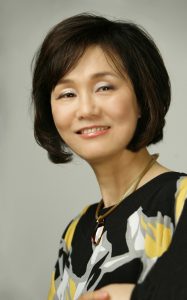Memo #27
Kyung-Ae Park
 For the first time since 1966, North Korea held a Party Conference and elected new leadership for the Korean Worker’s Party (KWP). Although U.S. State Department spokesman Philip Crowley cynically called it, “the ultimate reality show,” the rare Party Conference reveals important clues about the character of leadership succession in North Korea.
For the first time since 1966, North Korea held a Party Conference and elected new leadership for the Korean Worker’s Party (KWP). Although U.S. State Department spokesman Philip Crowley cynically called it, “the ultimate reality show,” the rare Party Conference reveals important clues about the character of leadership succession in North Korea.
First, a new heir is apparent. Kim Jong Eun, Kim Jong Il’s third son, has emerged as the successor at the Conference. He was appointed to two crucial posts: (1) as a member of the Central Committee, and (2) as a newly created Vice Chairman of the powerful Central Military Commission (CMC), which oversees the KWP’s military policies. If the succession process moves forward smoothly, he is likely to be named to the Party’s Presidium of the Political Bureau – the top Party leadership body.
Second, the “military-first politics” pursued by Kim Jong Il for the past several decades will continue to be an important factor in North Korean policy. A day before the opening of the Conference, the junior Kim was promoted to the rank of four-star general – it is no accident that his first public title was a military one. As a general and Vice Chairman of the CMC, he is in a position to direct the country’s 1.2 million troops. His role in the military and the support of the army are crucial to the succession process.
Third, surrounding Kim Jong Eun are several key players. These include members of the Kim family and their confidants: Kim Jong Il’s sister (Kim Kyong Hui), her husband (Jang Song Taek), and two of Jang’s close confidants (Rhee Young Ho and Choi Young Hae). Each gained prominent new posts at the Conference. All of them are expected to build Kim Jong Eun’s power base, and thus exert decisive influence in an orderly succession of power.
Fourth, the party “reshuffle” did not reflect a generational change. It emphasized continuity rather than significant changes in party leadership. There is no young blood among the 32 members of the Political Bureau. Only one member is in his 50s. A few are in their 60s and the rest are older than 70.
In North Korea, the succession process has officially begun, and Pyongyang hopes to assure continuity and stability for secure succession.
About the Author:
Kyung-Ae Park is a Korea Foundation Chair in Korean Research, Institute of Asian Research, The University of British Columbia.
Links:
- New Challenges of North Korean Foreign Policy, Book edited by Kyung-Ae Park, October 2010
- North Korea leader’s son promoted, seen as heir, The Washington Post, September, 2010
- Interview: Recent Visit to North Korea (Interview with Kyung-Ae Park – in Korean language), Maeil Business Newspaper, July 2010
Related Memos:
- See Kyung-Ae Park’s Memo, Examining North Korean Foreign Policy – Video Interview (Memo #54)
- Our other Memos about North Korea